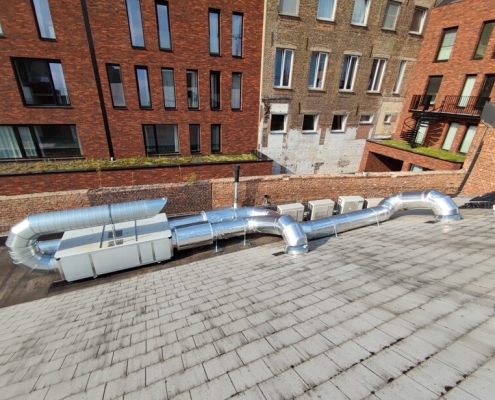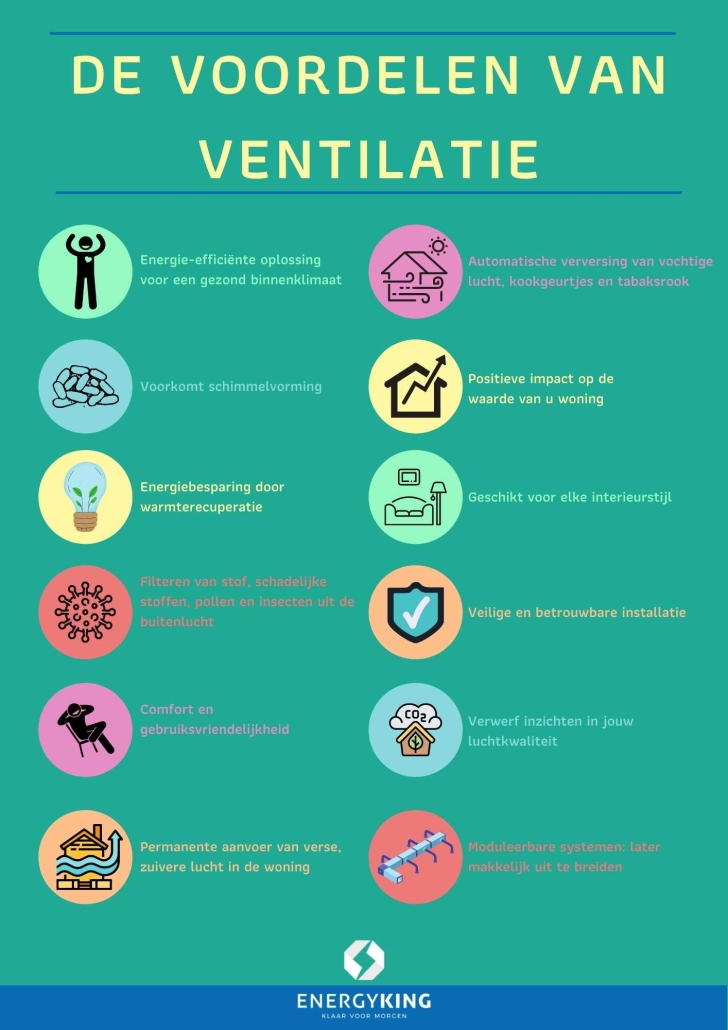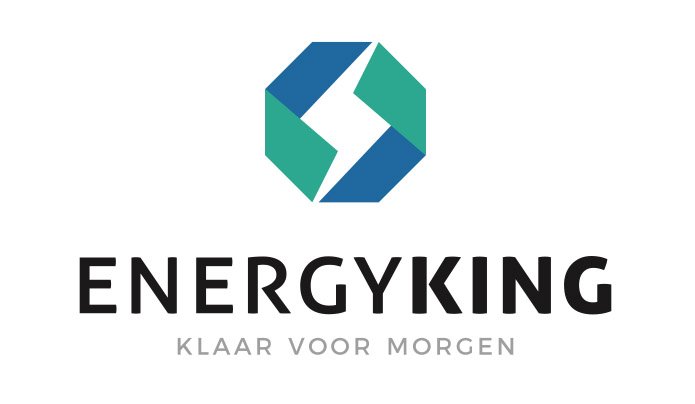What is ventilation and why do we use it?
Ventilation improves the quality of an indoor space. Ventilation can prevent unpleasant odors, allergies and health problems.
There are two methods, uncontrolled or controlled ventilation, in other words natural or mechanical ventilation. But what is the difference?
Natural ventilation is the healthiest form of ventilation. Found in grilles on exterior walls, open windows or exhaust and supply ducts. One can easily adjust the amount of ventilation as needed. Natural ventilation is the most sustainable ventilation because there is no energy consumption. Moreover, it also has a positive effect on the EPC value.
With mechanical ventilation, the flow rate(amount of air per unit time) is self-determined. Often natural ventilation is insufficient. Especially in homes that are well insulated.
You can come to us for two different ventilation systems, System C and System D.
Which type do I choose?
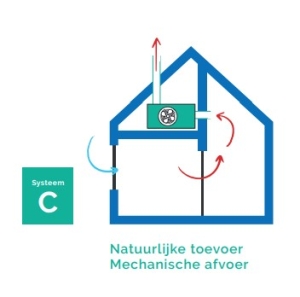 System C: This system draws fresh outside air in through grilles in walls or windows. System C combines natural ventilation with a mechanical ventilation system. Ventilation grilles supply fresh air naturally while a fan mechanically exhausts the polluted air. This system has some drawbacks, however, when it is cold outside fresh air is drawn in with it. This creates a heat loss. Conversely, when it is warm outside this warm air is also drawn in. There is a chance that the temperature in your home will rise and therefore you will have to cool it with an air conditioner. This in turn leads to higher electrical consumption.
System C: This system draws fresh outside air in through grilles in walls or windows. System C combines natural ventilation with a mechanical ventilation system. Ventilation grilles supply fresh air naturally while a fan mechanically exhausts the polluted air. This system has some drawbacks, however, when it is cold outside fresh air is drawn in with it. This creates a heat loss. Conversely, when it is warm outside this warm air is also drawn in. There is a chance that the temperature in your home will rise and therefore you will have to cool it with an air conditioner. This in turn leads to higher electrical consumption.
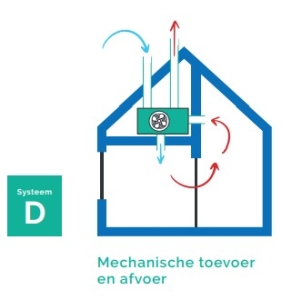 System D: Also called balance ventilation. The system is based on creating a balance between supply and exhaust of clean air. There are no grilles involved here. The clean air is filtered, which is ideal for air quality. System D supplies heated air, reducing heat loss to an absolute minimum. Thus, System D consumes less energy than System C.
System D: Also called balance ventilation. The system is based on creating a balance between supply and exhaust of clean air. There are no grilles involved here. The clean air is filtered, which is ideal for air quality. System D supplies heated air, reducing heat loss to an absolute minimum. Thus, System D consumes less energy than System C.
Is ventilation mandatory in new construction or renovation?
Yes, everyone who builds or remodels a house since 2006 has obligations toward ventilation. If your ventilation does not meet EPB requirements, you risk fines. For new construction and renovations, type C and D ventilation is very suitable. EnergyKing offers both systems and will guide you to the best ventilation system for your home.
What are EPB requirements?
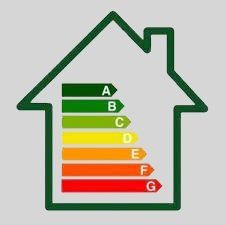 EPB stands for Energy Performance and Indoor Climate. It determines the energetic total package of your home and gives a score for it. The EPB report includes not only the quality of your indoor climate, but also insulation, solar panels, heating, etc. The EPB requirements set minimums that houses must meet. On the website of the Flemish government, you can check whether your home meets the EPB requirements.
EPB stands for Energy Performance and Indoor Climate. It determines the energetic total package of your home and gives a score for it. The EPB report includes not only the quality of your indoor climate, but also insulation, solar panels, heating, etc. The EPB requirements set minimums that houses must meet. On the website of the Flemish government, you can check whether your home meets the EPB requirements.
Is ventilation better for health?
Yes, studies show that the air in your home is on average 2 times more polluted than outdoor air. Polluted indoor air can lead to nausea, headaches, allergies and CO poisoning. So it is very important and necessary to provide proper ventilation in your home. So especially people with symptoms such as asthma and bronchitis will definitely benefit.
Ventilation and COVID-19
To keep the air in a building healthy, it is important to continuously ventilate and additionally ventilate. The WHO also names ventilation as an important factor in preventing the virus that causes COVID-19 from spreading inside. To help you implement the measures around ventilation and aeration in the fight against COVID-19, the Ventilation Task Force of the Corona Commission made a handy roadmap. Have you already implemented ventilation measures? Use this roadmap to evaluate the ventilation in your building.
How do I maintain my ventilation?
For your system to work as efficiently as possible, it is very important to maintain it properly. Over time, dust, grease and bacteria accumulate against the walls of the ducts, causing the ventilation to work less well and inefficiently. Air throughput is reduced and the capacity of ventilation decreases. Health complaints and noise pollution are additional consequences. It is recommended to clean the ventilation ducts every 3-5 years and replace the filters every 6 months.
If you want to make sure your home is optimally ventilated, do not hesitate to contact us, we will be happy to help.

